A HEMINGWAYS LUXURY KENYA SAFARI-BEACH HOLIDAY
Date published: 24/05/2019
Date published: 24/05/2019
We were in the heart of Kenya, following in the revered footsteps of famous author and explorer Ernest Hemingway, albeit with rather more luxurious lodgings. Having visited Kenya once before we understood Hemingway’s passion for the country, and as we touched down in Nairobi, with hot earth beneath our feet and blue skies above our heads, our blood raced at the thought of the adventures that lay ahead. We’d be staying at three properties from the Hemingways Collection, each boutique and beautiful in their own way.
After an exhilarating bush flight with Safarilink from Nairobi to the Naboisho Conservancy (which adjoins the Masai Mara) our first stop was Ol Seki, a private tented camp in some of the wildest landscapes of Kenya.
I learnt to crawl in a tent. Camping was a regular part of family life growing up and we spent much of our holiday time under canvas all over the UK and in Europe. I loved everything about it, from the pitter-patter of rain drops on the fly sheet, making me feel safe and snug inside, to cooking sausages over an open fire and waking up each morning to the sounds of the countryside. Yet somewhere along the way this all changed. After tasting the sweet life of luxury travel as an adult, camping holidays became a distant memory. If it didn’t come with a four-poster bed, ensuite bathroom and 25-course tasting menus, I wasn’t interested.
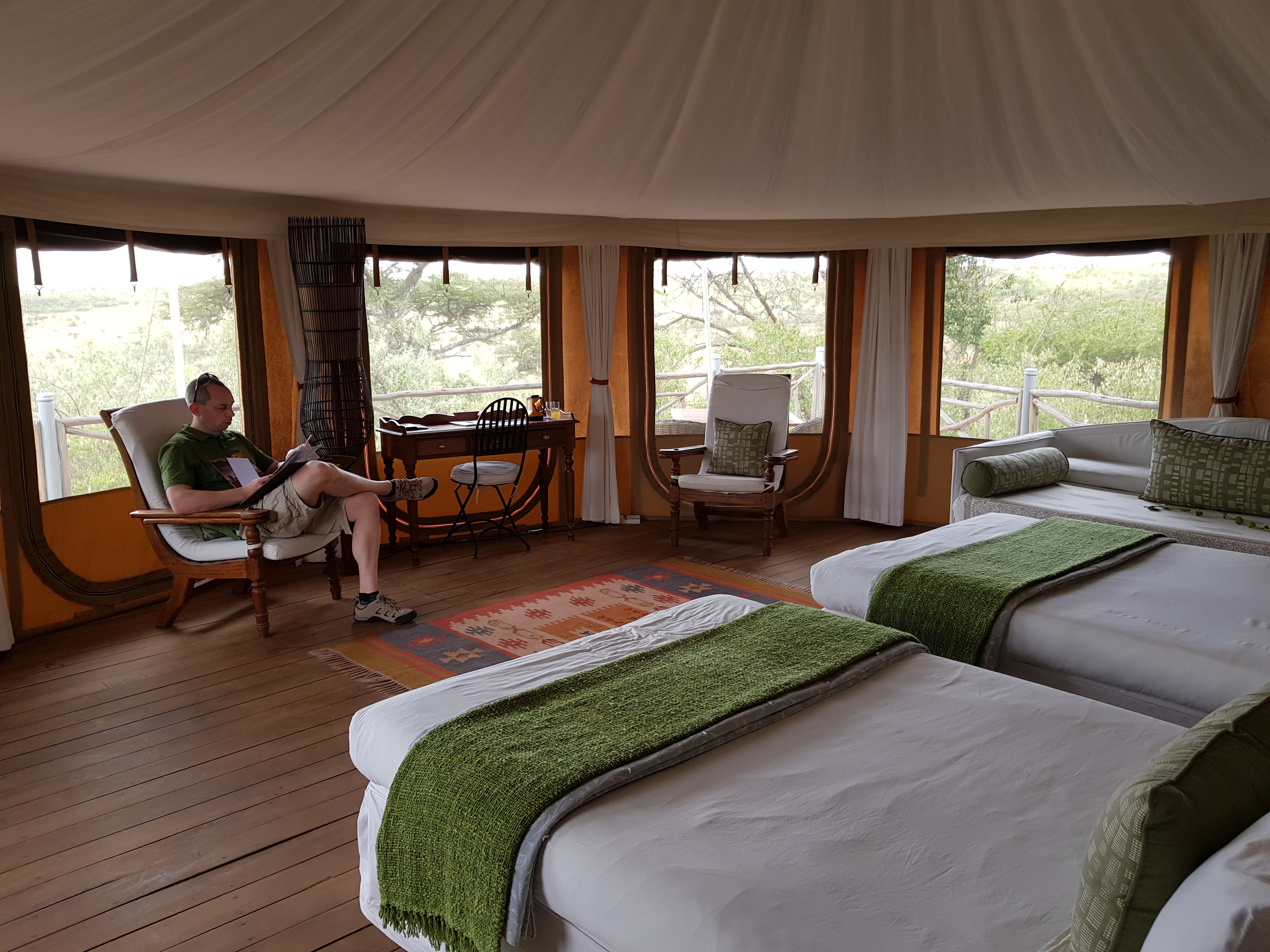
Inside our tent PHOTO|Conversant Traveller’
So when I discovered we’d be camping on our safari holiday in Kenya, I was a little hesitant.
However circling above Ol Seki in our tiny bush plane as we came into land, I realised that this wasn’t camping as I knew it. The tents here were smart, enormous and thoughtfully spaced out to ensure guests had plenty of privacy to enjoy their own slice of bush life, so they could perhaps experience what Hemingway must have felt on his first trip to Kenya.
This was going to be far more than just okay!
Ol Seki is a small and intimate camp with just 10 luxury tents, a communal dining area and a lounge full of super-comfy leather sofas perfect for enjoying pre-dinner drinks and sharing safari stories with fellow guests. Yet the best part has to be the panoramic views out over the plains, seen from every part of the camp. It really is a superb setting, with the tents perched up on a ridge, and the savannah and its inhabitants down below.
We spent many hours on our private terrace just watching the wildlife trundling about the plains, and each day we spied elephants, impala, wildebeest, giraffe and warthog all going about their business. One day a troop of baboons came through camp right below our verandah, and took position in the trees around our tent. We didn’t even need to leave camp to be on safari!
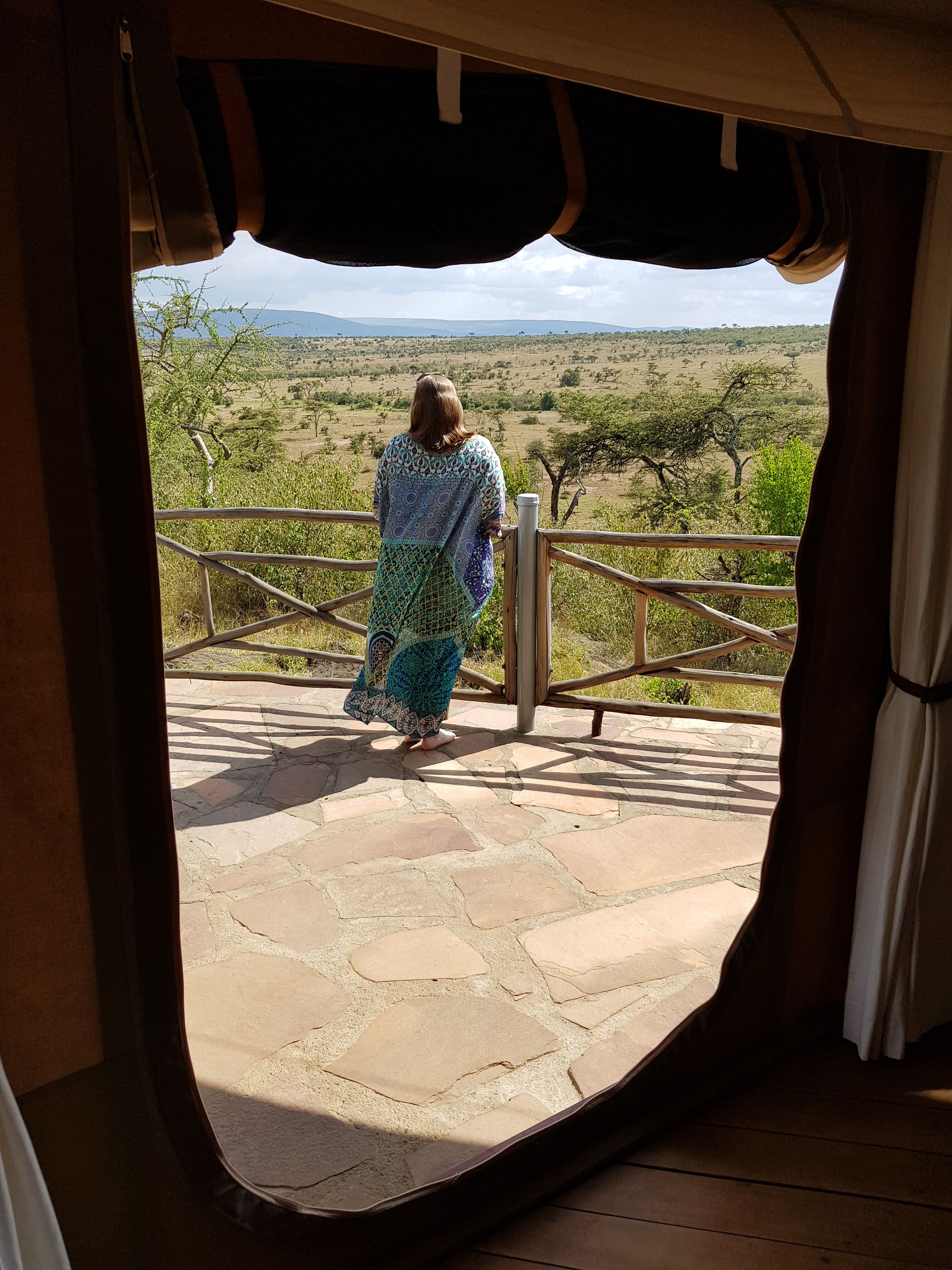
The view from our bed! PHOTO|Conversant Traveller’
Each time we arrived back after a game drive, we found piles of brightly-coloured Agama lizards sunning themselves on our balcony, as well as the adorably cheeky rock hyraxes who used the wooden fencing to play hide and seek. At night we’d hear the latter running up and down the wooden walkway practising their acrobatics, whilst some of the more intrepid even scuttled over the roof of the tent. Falling asleep to the sounds of nature, knowing you’re safe inside your very own tented palace, is definitely up there with some of life’s ‘moments’.
We loved our tent, and the surprising level of luxury that it provided. The beds were comfy, there were chairs to recline on in the afternoons with a cold beer from the complimentary cool-box, and even an ensuite bathroom with hot shower and dressing area. The door and window panels had mosquito netting so we could still enjoy the cooling breeze and views of the plains whilst inside (we’d been warned to keep the door zipped to stop the pesky hyraxes making themselves at home!).
Dining was communal, something we hate but accept that it’s all part of safari life. Sometimes it can be a disaster depending on who the others guests are, but during our stay at Ol Seki we actually enjoyed the company of our fellow adventurers and had fun chatting about safari sightings and getting ideas for our future travels.
We did ask for private dining one night, and returned from our evening safari to find a table set up in our tent. Very romantic, and it was good to have a break from the other guests. Yet it did actually feel a little odd, being zipped inside after each course had been delivered. I think we’d expected to be eating outside on our terrace, like we had on previous safaris, but it was dark and freezing outside so I guess it made sense.
The food was simple, tasty and beautifully presented – it’s really quite incredible to think that the staff can create such culinary delights out here in the bush. We loved that the portions weren’t overbearing (sometimes on safari it feels like you’re being force-fed!), and the whole dining affair was unpretentious and friendly.
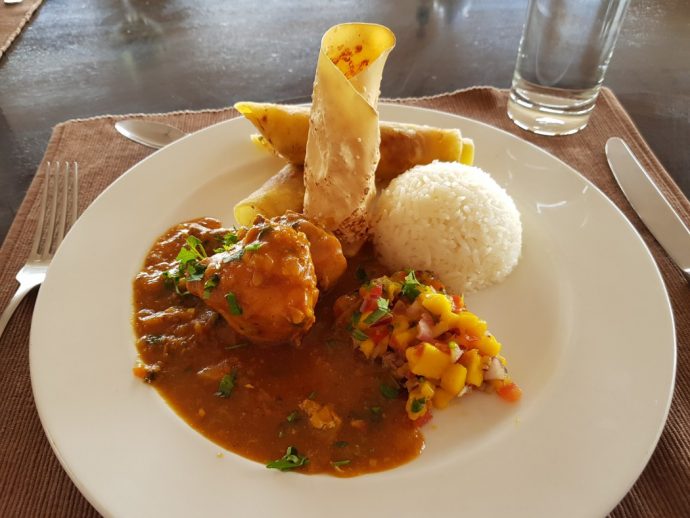
Chicken curry, safari style PHOTO|Conversant Traveller’
Camp host Debbie often came to sit with guests and we loved hearing her stories of growing up in Kenya, especially her various exotic pets.
We were a bit disappointed not to have any bush breakfasts during our stay at Ol Seki, but I’m sure this could have been arranged had we asked. However although eating out in the bush is great fun, it does mean you miss out on the full breakfast spread back at camp, and we found sitting out on deck tucking into a full English was equally enjoyable!
I’ve written about our safari in a separate post which you can read here, but in a nutshell we spent a couple of incredible days out in the bush with our Maasai warrior guide Patrick. We saw cheetah hunts, lion cubs learning life skills, hippos charging unexpectedly through the undergrowth, hyenas cackling through the early morning gloom, and so much more. We’d been to the Mara on safari before, so weren’t expecting to be wowed, yet we came away buzzing with excitement, memories and far too many photos.
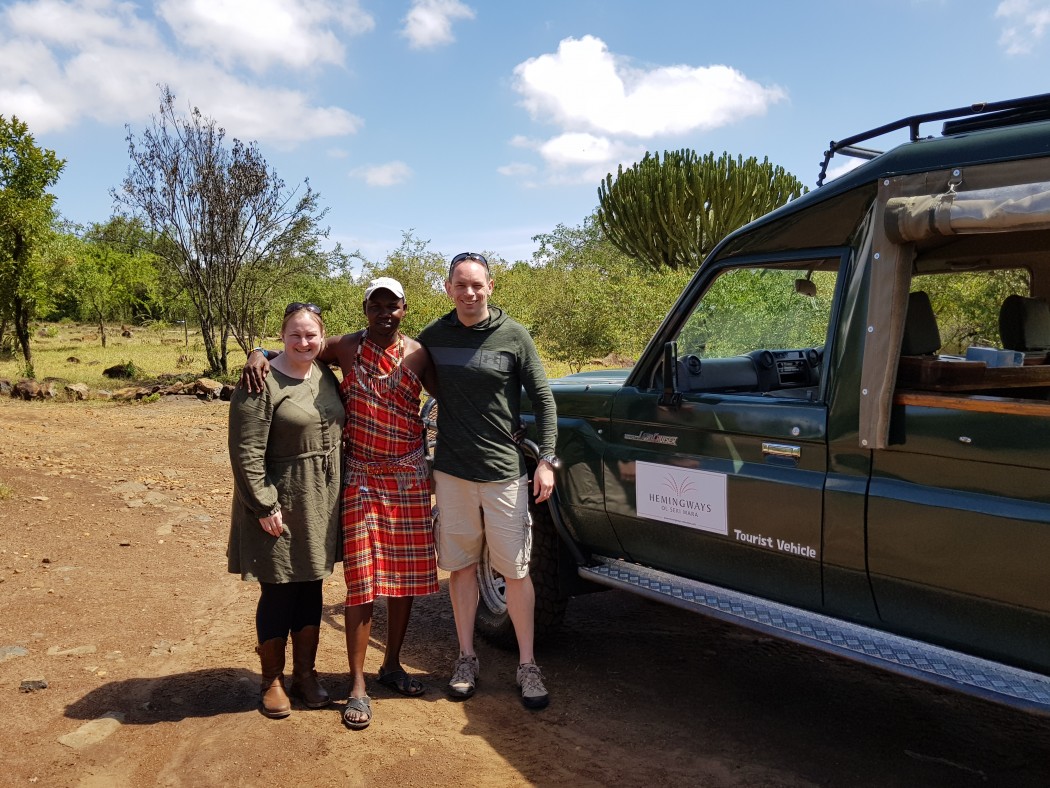
At a game drive with Patrick from Ol Seki Hemingways PHOTO|Conversant Traveller’
All too soon it was time to leave, and Patrick drove us to the main Masai Mara airstrip inside the park itself. It was really interesting being in the Masai Mara, and although the landscapes here were vast and beautiful with more variety than in the conservancies, the wildlife sightings were harder, and often at a far greater distance than what we’d been used to in Naboisho. Plus vehicles have to stay on the designated tracks in the national park, which meant we couldn’t get as near to the animals, unlike in the conservancies where off-roading and close encounters are all part of the adventure.
Our flight from the Masai Mara out to Malindi on the coast was in another small bush plane, this time with Mombasa Air. I’ve always thought of Kenya as quite a dry, brown land, but from high above it’s actually incredibly colourful, with lush green plains and even pink lakes like Magadi below!
Did you know Hemingway was also a fisherman?
Neither did we, but after our safari it made sense to head to Hemingways Watamu over on the coast. Home of the marlin and other mildly alarming fish that frankly sounded more Jules Verne than Hemingway, the coastal village of Watamu is famous for its deep sea fishing, as well as having one of Kenya’s finest beaches.
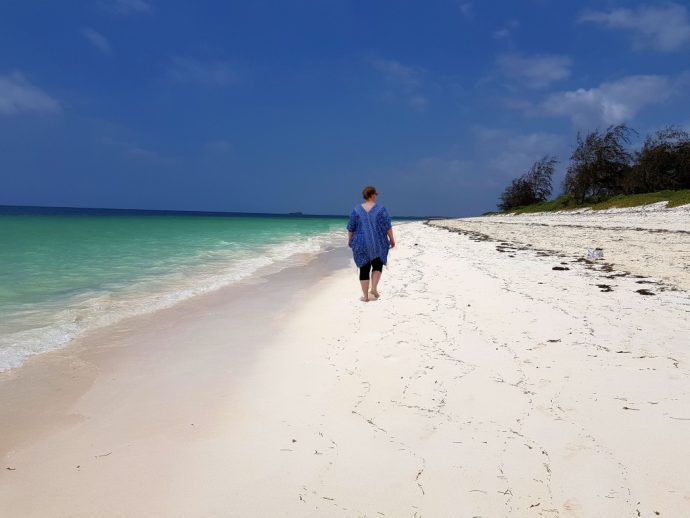
White sands of Watamu beach PHOTO|Conversant Traveller’
Despite once surprising ourselves by landing a few enormous pollocks whilst sea fishing in Cornwall, we decided to be land-lubbers rather than mermaids and spent our days walking along the white sand beach, exploring ancient ruins, and enjoying the numerous pools and…